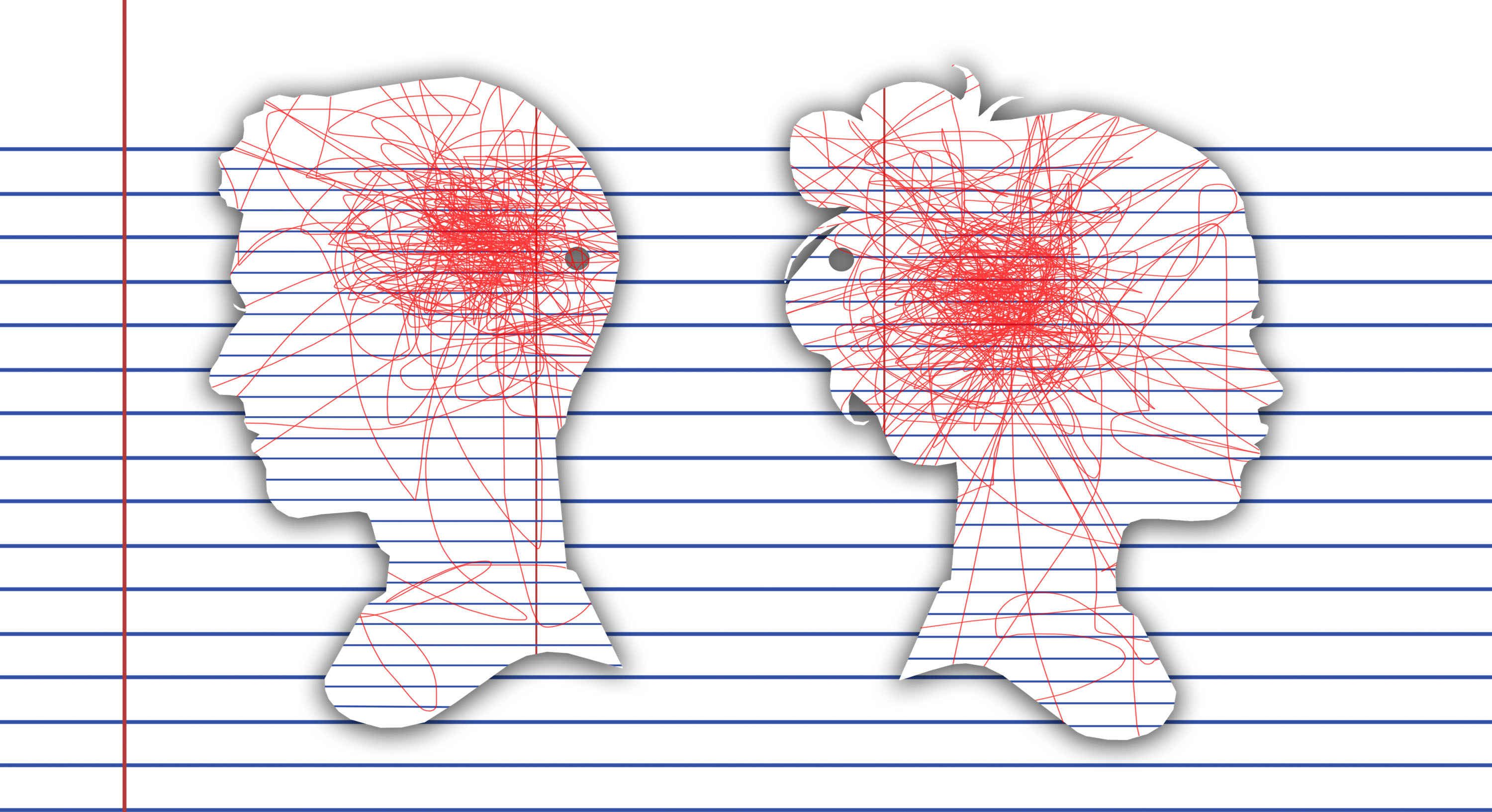Will Emery (COL ’19) has noticed that Georgetown students have the same conversation over and over as midterm season arrives. “They go, ‘How are you?’ ‘Well, I have nine tests, 10 essays.’ That sends a bit of an affirmation to this other student, I am working harder than you, I am doing truly inhuman work.” Those conversations might seem like an attempt at commiseration, but Emery finds that they have the opposite effect. They create an environment which harms students’ mental health: “stress culture.”
Emery, who has led several mental health organizations on campus, believes the solution starts with recognizing that Georgetown’s culture is failing students. “We all don’t like this,” he said. “This is awful for all of us. How can we collectively slow things down a little bit?”
Kenna Chick (COL ’20), who chairs the GUSA Mental Health Policy Team, believes that such conversations create impossible expectations. “Stress culture is further exacerbated by the facade of perfection,” she wrote in an email to the Voice. “This leads to students feeling even more pressured to have internships and be in leadership of a variety of clubs as they are comparing themselves to their peers.”
The challenge, Emery says, is asking students to slow down and be better stewards of their mental health. “It’s a bit of a prisoner’s dilemma. What it can sometimes sound like is we’re asking students to do less,” Emery said. But asking that of students conflicts with their ambitions.
Josh Sirois (SFS ’20), a GUSA senator at large, agrees that Georgetown’s problems with stress culture stem from students’ ingrained tendencies. “Georgetown students,” he said, “are obviously very passionate about the jobs, clubs, internships, and other projects they take on.”
Emery has not led any of Georgetown’s mental health organizations since the last academic year. But while he led the now-disbanded Mental Health Advisory Board, much of Georgetown’s mental health infrastructure improved. Emery and others successfully lobbied the university to reduce student rates for services at Counseling and Psychiatric Services (CAPS), which provides mental health treatment to members of the Georgetown community. Now, some students who couldn’t previously afford to go to CAPS can get the assistance they need. Emery also helped found Project Lighthouse, a student-run mental health program that connects students to their peers.
But the Georgetown mental health landscape still has craters. CAPS isn’t designed to deliver long-term care. If a student requires long-term treatment or care that CAPS cannot provide, CAPS refers them to off-campus treatment options. These off-campus treatment providers are not always as accessible as CAPS. They may be too far away or too expensive, which means that some students end up trapped between CAPS and an external care provider.
For those students, GUSA has partnered with SaxaFund to create the Off-Campus Therapy Stipend, which will help students pay for off-campus therapy. Initially, the organizers aimed to raise $4,000 to fund seven students’ therapy. Since then, the university has promised $10,000. The program will start in the coming weeks.
However, the stipend is not a sustainable solution. “[The initiative is supposed to] encourage administrators to quickly work toward committing to a plan of funding the stipend in the future or developing an alternative plan to offer long-term mental health care for all students,” Sirois wrote in an email to the Voice.
The stipend project, along with initiatives by CAPS to reduce costs and increase accessibility, is also not a solution to stress culture. “Georgetown is doing great with supportive care. If you are a student in crisis or a student who just isn’t feeling that great, Georgetown will be there 100 percent for you,” Emery said. “[But] how do we build in preventative care?” Emery’s vision for preventative care revolves around building what he calls a “culture of care.” Georgetown, he says, has a “legendary stress culture.” The challenge is in transforming that stress culture into one that better supports students.
In Sirois’ opinion, Georgetown has to strike a new balance in its collective culture. On one hand, students need to fulfill their goals: “We want to apply ourselves and create something positive,” Sirois wrote.
On the other hand, students need to relax and take time to look after themselves. But striking that balance is a challenge that Sirois hopes to address by putting students in conversation with each other. “Hopefully, we can soon bring in more students from all different parts of campus to have meaningful conversations about mental health and brainstorm more student-based projects and solutions,” he wrote.
Laura Marcucci, who works at Health Education Services, oversees several programs which are designed to work against stress culture. One is the Stall Seat Journal, which is a publication posted on the backs of stall doors in public campus restrooms. The Journal is a means to help students understand what “normal” means on a campus where students regularly hear conversations like the one Emery recounted. It also provides information about many other health topics, including alcohol and drug use, sexual health, and flu-prevention strategies. In addition, Marcucci advises the Georgetown chapter of Active Minds, which is a national organization dedicated to fostering conversation about mental health on college campuses.
Marcucci emphasized that stress culture can be difficult to change. “The issue is complex, and its origins and solutions aren’t cut and dry,” she wrote in an email to the Voice. “Changing a culture takes time. Some strategies for addressing this issue include, but are not limited to, considering the many reasons why stress culture is maintained; exploring the academic, career, and personal pressures that students face; marketing new norms around mental health, self-care, health promotion, success, and individual fulfillment; and working on ways to add in down-time and balance.”
Leanna Syrimis (SFS ’18), who is the executive director of Project Lighthouse, agrees that addressing stress culture requires changing the way Georgetown students approach their mental health. Syrimis advocates for stronger conversations around self-care. Every night, from 7 p.m. to 1 a.m., Project Lighthouse connects volunteers with Georgetown students who could use a sympathetic ear. They talk about anything and everything, but neither party knows the other’s identity. Open conversation, which Project Lighthouse hopes to inspire, is a bridge between the culture Georgetown has now and the culture Syrimis is working toward—it lowers the barrier to frank conversation. “We’re all going through something unique,” Syrimis said. “If we wear our hearts on our sleeves, we can build such a strong community.” But Syrimis envisions a culture in which those sorts of conversations are completely normal and not subject to the stigma which makes Project Lighthouse’s anonymity necessary.
Syrimis has found that Georgetown’s sense of community is vibrant yet superficial. “I have spent my time on this campus longing for those kinds of connections [that are meaningful],” she said. She has found one with her roommate. “If I’m crying in my living room, she will come down from the loft. If she hears me, she’ll come over to me and won’t even say, ‘What’s wrong?’ She’ll just sit next to me and wrap her arms around me.” Syrimis thinks helping others find their own genuine communities too has the power to improve Georgetown’s culture. “There is something so special about that that I feel like could make a community where we’re all striving to change the world and we’re all striving to make it better.” But for now, she says, Georgetown students don’t always use the resources available to them, like Project Lighthouse, Health Education Services, and chaplains.
As a way to kickstart the conversations Syrimis envisions, Chick is bringing together two of the organizations with which she spends her time. The GUSA mental health policy team will partner with Project Lighthouse—for which Chick is the director of outreach—to gather stories from the Georgetown community to post anonymously around campus. Chick wrote that she hopes the program will let students “see that they are not alone in [their] struggles and that it is more common than we know.”
Each of these leaders in Georgetown’s mental health landscape accepts that there is no single solution for, nor a single cause of, stress culture. But each leader believes that Georgetown must move in the same direction: toward improving students’ mentalities.
When Emery summed up his approach to creating a culture conducive to mental health, he sounded like a dean invoking Ignatian spirituality in a convocation speech. “How do we …have college be an opportunity for education about how to live one’s entire life?”
Correction: a previous version of this story misidentified Leanna Syrimis’s school and graduation year. She is SFS ’18, not COL ’19.





